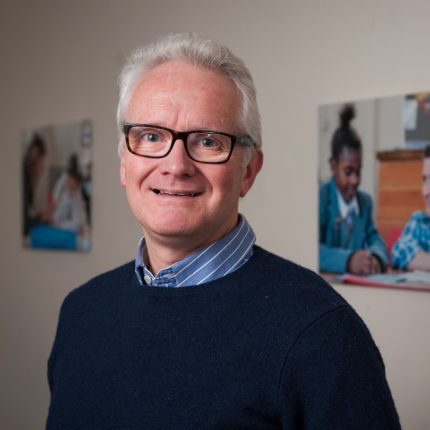IntoUniversity started in a West London community that people across the world now know all too well for the worst of reasons: the Lancaster West Estate, home to Grenfell Tower.
There can be few local communities in history that have been subject to so much national attention, or so many questions about the relationship between place, poverty and social mobility.
Community-based and long-term WP
Fifteen years before the fire, we launched IntoUniversity in response to the alarming number of young people from Lancaster West who were leaving school aged 16 with few qualifications or prospects. What shocked us was that this outcome was routine: young people expected nothing else. Not going to university was just normal.
Our response was to provide them with a new version of normality, by offering higher education access services within the community. We launched an after-school academic support programme at a centre on young people’s route home from the local school. We provided mentors drawn from local universities who would come to the community to inspire and motivate. And we partnered with neighbourhood schools to run aspiration-building programmes.
We didn’t realise this at the time, but we were doing something quietly innovative. Instead of treating low HE participation as an issue for individual students, we were treating it as a community issue, trying to build the educational and cultural capital required to create local traditions of HE participation. And because we were thinking about HE access in terms of the accumulation of community capital, we decided to take a long-term approach and started working with young people in primary school, continuing to provide support right up to university admission.
Our model – which is unique among HE access providers – is to operate centres at the heart of the community, providing the kind of week-on-week and-year-on-year academic and personal support which is taken for granted in more affluent neighbourhoods where most parents are graduates with professional careers.
Our mission is not only to improve outcomes for young people living in low-participation neighbourhoods (and we have achieved impressive results so far) but over the long term to create local traditions of university participation.
IntoUniversity has now expanded to many new locations, but our head office is still on the doorstep of Lancaster West and we have a deep emotional bond with that community. “Home is where one starts from”, it is said.
Over the last ten years, we have launched new centres in 24 other local communities. Each community is different, but all face the same challenge of social and economic hardship and low HE participation. One of our newest centres is in Clacton-on-Sea, a wonderful place with a strong community identity, but as one community leader put it:
“I am very aware of the alarming levels of poverty, unemployment and lack of opportunity for families and young people in the Clacton area. I have long believed that our biggest problem is to address aspiration and deliver the tools for young people to break out of this spiral.”
WP needs to be hyper-local and targeted
This Thursday we will be publishing new research (carried out for IntoUniversity by strategy consultants OC&C) which provides a stark picture of the distribution of need for university access work in England, Scotland and Wales. What emerges is a map showing that while there is some need in dispersed rural communities, the most need is concentrated in hyper-local urban communities very like Lancaster West or Clacton-on-Sea.
Combining POLAR 4 data with Primary School Free School Meal rates, the map reveals the clusters of primary schools whose students are least likely to enter university and most likely to be living in poverty. This not only provides a much more granular analysis than is possible with POLAR 4 alone but generates a list of target areas for new services.
Three “levels of need” for primary school HE-access across the UK
 Source: OC&C analysis for IntoUniversity
Source: OC&C analysis for IntoUniversity
This map contains an implicit challenge to HE access providers to start taking geography more seriously and to target resources on the local communities most in need of support. There is also a pressing need for more research into low rates of HE progression as a community phenomenon.
On 5th July we are bringing together our university partners and others including Sam Gyimah and Chris Millward, for a one-day conference at King’s College London to ask how we can respond to the research findings so that young people in communities like Clacton are not left behind in accessing higher education.













Your piece is really interesting and echoes the work of our outreach efforts here at Birkbeck. We base our activities on local knowledge, priorities and demographic data. But the main difference is that we primarily target adults. Your article refers to POLAR data and free school meals – it is vital that we recognise that these categories are due to the social, financial and employment status of parents and carers. In undertaking these localised targeted outreach activities, parents can be a vehicle for long term change and improvement if they are given the same treatment and experience aspiration raising activitiesas… Read more »